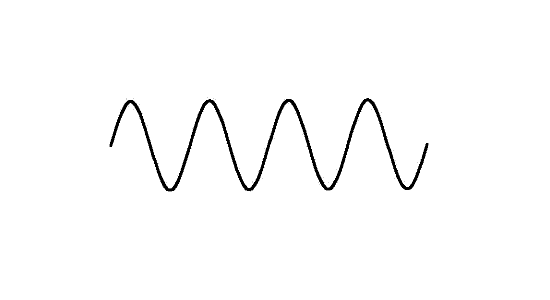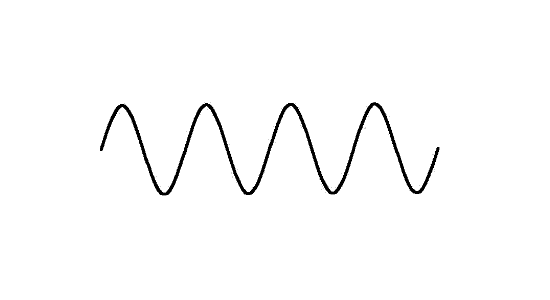Vibrato
North Suburban HAMMOND ORGAN Service
Most of you who are reading this already have at least a basic knowledge of what vibrato is; that is, the periodic and regular wavering that you hear in many musical instrument sounds including singing voices. But, there are many different types of vibrato, and they are quite different from each other, so let's take a little look at this and see what we can find.
Before we even begin, however, let's make sure that we're on the same page regarding two terms which are often used in place of each other, and these are: Tremolo and Vibrato. You'd be surprised at how often and how many people use these terms incorrectly, using one term to mean the other, and/or having no real understanding of either one or what these effects actually do. So we'll set the record straight right at the start of this article; and these two animated illustrations should greatly help.

Figure 1. This is Tremolo
Tremolo is a periodic and regularly-recurring change in the instantaneous volume of a musical tone, and vibrato is a periodic and regularly-recurring change in the instantaneous pitch of a musical tone. One good way to see the difference is to look at a graphical representation of a simple soundwave and see, via these animated gifs, the actual effect of tremolo and vibrato on the sound wave. Although these two gifs are in the technical article about the Hammond Organ, I've reproduced both of them here for your convenience.

Figure 2. And this is Vibrato
Figure one is a look at TREMOLO. As you can see, the height or amplitude of the sound wave is continuously varying. Figure two is VIBRATO. The wavelength slightly varies which indicates that the frequency or pitch of the soundwave is continuously varying. The two effects are very different, and the two terms, TREMOLO and VIBRATO should not be confused or used interchangeably, even though no less a person than Don Leslie himself used the word "Tremolo" in describing the tonal effects produced by his Leslie speakers, which effect included both tremolo and a very complex vibrato together.
Simple Vibrato
Simple vibrato is what we show in figure two. It is just a slight frequency shift that is applied to a musical tone, usually varying the frequency by no more than 1.5% above and below steady state pitch while keeping the volume constant. As such, it would be rather uninteresting to listen to but as soon as the signal with vibrato leaves a speaker and becomes audible tone, the effect becomes a much more complex vibrato. The reason for this is that sound travels at around 1120 feet per second, and therefore, when sound waves propagate through the air, there is an increasing time delay as the distance from the speaker increases. Now suppose that you are listening to a tone with a simple vibrato in a typical room in a house, and the speaker is on one side of a room that is (to make easy figuring) 11.2 feet long.
It will take the sound 0.01 second to traverse the room, after which it will reflect from the opposite wall. Because of the slight delay, the pitch of the sound wave at the wall will be slightly different at any instant in time from the frequency at the speaker. A listener standing in the room, however will hear both the direct sound from the speaker and that reflected from the wall. In reality, soundwaves travel in a spherical pattern and the walls of a room are straight and flat, so if you think about this, you will realize that the effect becomes very complex as sound reflects from the interior surfaces in a room and also from objects within the room. Thus, the simple vibrato produces an infinitely complex effect in a listening space and it is why vibrato becomes a very nice effect to hear, adding richness and complexity to even a simple tone.